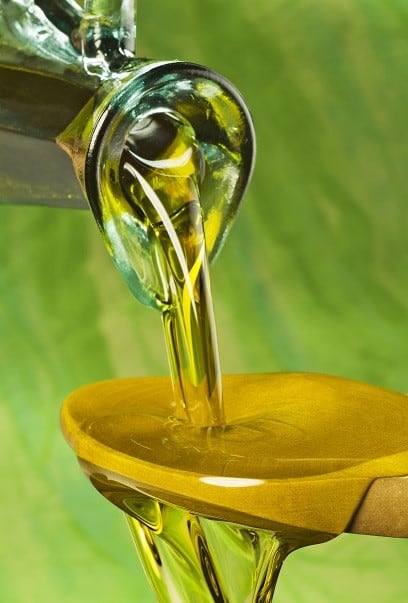 Oily skin is clearly a nightmare for acne, in more ways than one. The oil, scientifically called sebum, clogs your pores up by combining with dead skin cells, and once that happens, you’ve got two scenarios.
Oily skin is clearly a nightmare for acne, in more ways than one. The oil, scientifically called sebum, clogs your pores up by combining with dead skin cells, and once that happens, you’ve got two scenarios.
One, the melanin in your sebum oxidises and turns black, leaving you with a blackhead.
Two, the lowered oxygen levels provide the perfect breeding ground for p.acnes bacteria, which digests sebum for fuel.
This second scenario is how most acne forms; p.acnes multiplies like a woodland ant colony, your immune system takes notice, and a massive bombardment of inflammatory chemicals is unleashed, which swells your pore and creates acne.
What can be done about the problem? That’s what we’re going to discuss today.
One – eat sweet potatoes
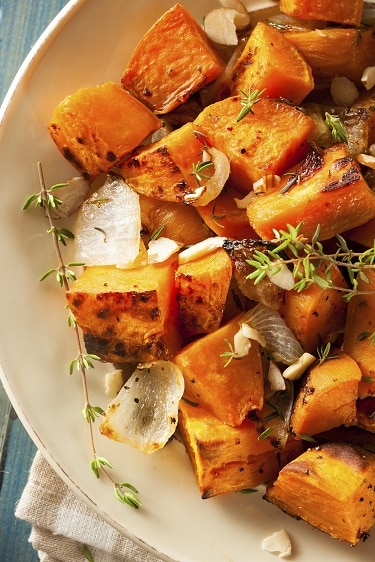 Sweet potatoes are terrific for many conditions behind acne. They’re proven to reduce inflammation, and contain a compound called quercetin that soothes the symptoms of food allergies.
Sweet potatoes are terrific for many conditions behind acne. They’re proven to reduce inflammation, and contain a compound called quercetin that soothes the symptoms of food allergies.
However, their real claim to fame is their massive content of beta-carotene, or plant based vitamin A. 100 grams of roasted sweet potatoes contains 283% of the recommended daily allowance (RDA), which is barely half a serving if you have the slightest bit of hunger.
Vitamin A works its wonders by controlling your sebaceous glands, which produce the skin’s oil. Specifically, your sebaceous glands are lined with retinoid receptors, which retinol, the active form of vitamin A, binds to and activates.
Vitamin A can also shrink your skin pores, making what oil you do have less able to clog them. It even lowers keratin protein production, preventing dead skin cells from sticking together. Accutane (avoid) uses vitamin A as its main ingredient.
Read Annihilate Your Acne – learn how to clear your skin permanently
You can tell that sweet potatoes lower oil production just by looking at them – beta carotene provides yellow, orange, and red pigments in foods (see carrots and pumpkins). The richer the colour of your supermarket bag, the better for oily skin they will be.
Two – eat some oysters
The oyster can improve oily skin via multiple pathways. Firstly, this shellfish is the world’s best source of zinc, bar none. 100 grams contains 91mg of this mineral; the RDA is 15mg and a typical zinc pill contains 30mg. Zinc is a potent aphrodisiac, and the world’s most famous lady’s man Casanova reportedly ate 50 oysters or more daily.
How does that help oily skin? Simply because zinc is a necessary cofactor for the creation of retinol binding protein, the main bloodstream transporter of vitamin A.
Without zinc, your vitamin A cannot bind to sebaceous gland receptors, and is useless for oily skin. Not to mention that zinc cures acne itself by controlling the immune system.
Oysters are also fantastic for the rare mineral magnesium, with 14% of the RDA per 100 grams. Magnesium helps to clear excessive cortisol from the bloodstream and can therefore reduce the oily skin caused by stress hormones (see below).
Note: if you find oysters too slimy or difficult to cook, a dedicated zinc supplement will work just as well. A great dedicated (and pure) option is this Thorne Research Zinc Picolinate.
Three – use the secret natural topical treatments
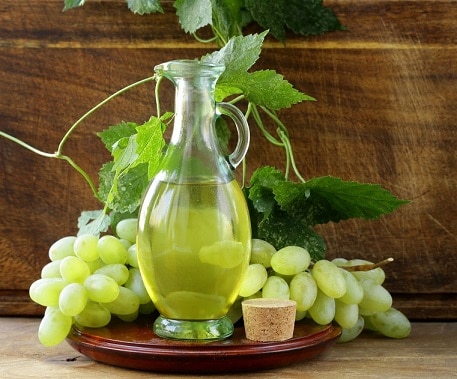 Diet and lifestyle are easily the most important causes of oily skin, but topical treatments are great for providing a hyper-concentrated localised burst:
Diet and lifestyle are easily the most important causes of oily skin, but topical treatments are great for providing a hyper-concentrated localised burst:
Sea buckthorn oil – an orange berry from the Himalayan valleys, which Nepali villagers sell in juice form to passing mountaineers. The oil has two excellent properties for oily skin: 1) it’s extremely rich in vitamin A, and 2) it contains plant steroids called stigmasterol and beta-sitosterol, which are strong inhibitors of the androgen DHT.
One study found that after just one week, sebum production fell by 17%, while the patient people who applied sea buckthorn oil for eight weeks enjoyed a 45% reduction, which is amazing for such a random berry. Remember to buy sea buckthorn berry oil, which is completely different to sea buckthorn seed oil.
Green tea – another random foodstuff with amazing results in studies. Green tea again inhibits DHT on the skin’s surface, through an antioxidant compound called epigallocatechin gallate. Green tea is slightly slower than sea buckthorn oil, with a 6% reduction after 1 week (study)…
…but after 8 weeks, topical green tea reduced oily skin by 60%. A separate study found a 50% reduction in acne. You could even combine both green tea and sea buckthorn oil, as they work their magic through different compounds.
Four – sprinkle cinnamon over everything
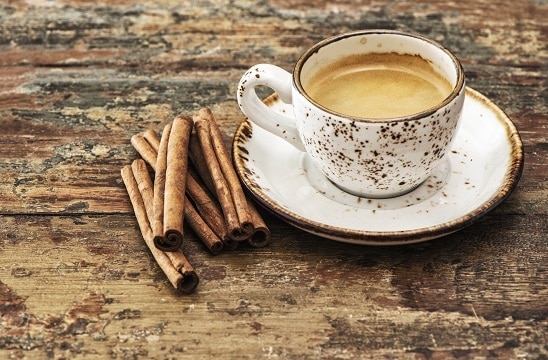
The vitamin A in sweet potatoes is impressive, but it falls short next to the greatest secret food for oily skin – cinnamon. This common spice, found in nearly every kitchen, is widely prescribed to diabetics for lowering blood glucose and insulin.
High blood sugar stimulates sebum production massively, while insulin is the worst hormone for oily skin ever – it’s far stronger than DHT or testosterone. Insulin both encourages the creation of IGF-1, an anabolic hormone also found in dairy, and increases the receptiveness of androgen receptors in the sebaceous glands to DHT.
Hence, insulin fires up your oil pumping machine twice as hard, and cinnamon can combat that well. In 2003, a study gathered 60 type 2 diabetic patients. The groups receiving cinnamon enjoyed blood sugar reductions of 18-29%, including a fall of 20% from just ¼ to ½ of a tablespoon. The groups receiving a placebo displayed no difference. Another 2003 study found big reductions in fasting insulin from cinnamon.
So buy a packet of Ceylon (not cassia) cinnamon and sprinkle it on foods like a maniac, perhaps yogurt or your morning tea. An excellent bulk brand is this Healthworks Organic Ceylon Cinnamon Powder.
Five – get more vitamin D
Vitamin D is another insulin slasher, this time by improving your insulin sensitivity. In short, insulin’s job is to convert blood glucose to glycogen (energy) and store it in your muscle storages…
…but the receptors in those stores can become resistant, barely responding when insulin arrives. Your pancreas must pump out more insulin to compensate, and now your levels are elevated. Improving insulin sensitivity is essential, and happily, that’s what vitamin D can accomplish. Even better, you could be deficient right now.
There are vitamin D receptors all over your body. A human body contains 30,000 genes, and vitamin D affects nearly 3000, including the gene that activates the insulin receptors in your glycogen stores.
This study took 100 Iranian volunteers, 70 women and 30 men, and fed them 50,000IU of vitamin D weekly (for context, I take 2000IU daily). Initially, 24% of participants were vitamin D deficient, and after 8 weeks, there was a significant reduction in both bloodstream insulin and the insulin resistance of glycogen receptors.
So you now have a fun strategy to follow: get to the beach right now, do some surfing or sunbathing, and relax as your oily skin is confined to history.
If you live somewhere damp and grey like England, you can take this NatureWise Vitamin D3.
Six – eat more antioxidants
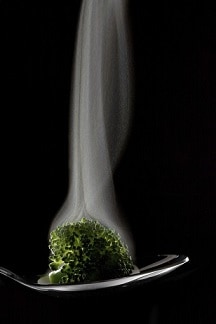
Insulin is also highly prone to oxidation, and when it does, it becomes useless at activating energy store receptors. If a large proportion is oxidised, your somewhat primitive body will simply pump out more insulin to compensate. This is another form of insulin resistance, and another road to oily skin…
…and not surprisingly, the protection for these insulin molecules is eating more antioxidants.
Your simple solution then, is to pack your diet with herbs, green vegetables, fruits and spices. Eat a wide variety to get many different antioxidant classes – phenols, flavonoids, catechins, anthocyanins, carotenoids, and individual superstars like resveratrol in red wine and lycopene from watermelons.
Why bread and pasta are a massive cause of acne
The best sources may be lurking under your nose. Dark chocolate is bursting with antioxidants, and coffee is the average American’s number one source. Ground cinnamon is the 3rd best food for antioxidants, according to the ORAC scale, while basic dried oregano ranks fifth.
Never underestimate herbs and spices! They’re often even more nutritious than fruits and vegetables, since drying them out makes the nutrients hyper concentrated.
Seven – sleep well
Sleep deprivation is a consistently overlooked cause of acne. Why would it not be – you spend a third of your life sleeping. That’s over 25 years by the time you’re 80. Many teenagers have wacky sleep schedules, and fail to get 8 hours of sleep each night, but one powerful benefit is less oily skin.
Like vitamin D, sleep improves your insulin sensitivity, by maintaining the function of insulin receptors. One 2012 study created two groups: humans assigned to sleep for eight hours, versus humans sleeping for no more than 4.5 hours.
Insulin sensitivity fell by 16% in the sleep deprived group. Furthermore, the insulin sensitivity in fat cells fell by 30%, which rivalled that of patients with type 2 diabetes. The scientists said that it was equivalent to somebody ageing 10 to 20 years.
In 2010, a study analysed patients sleeping for either 8.5 hours of 4.5 hours. The conclusion: “Partial sleep deprivation during only a single night induces insulin resistance… in healthy subjects”.
Sleeping more is an oily skin solution that every human being can afford (because it’s free).
Eight – relax and reduce stress
Do you ever annoyingly get acne when you’re nervous before a hot date? Or when you’re busy at work with no holiday in sight?
The reason is what the legends of old knew all along – stress causes acne. Stress causes acne through impaired nutrient absorption, digestive inflammation and delayed wound healing, but it also opens the oil floodgates by increasing blood sugar. The main stress hormone is cortisol, and one of cortisol’s main duties is to pull glucose from your skeletal muscle stores.
For example, cortisol is naturally higher after sleeping, because you’ve been fasting for 8 or 9 hours and need to summon extra glucose for energy. Unfortunately, these powers also apply during simple stress or anxiety.
Scientists have tested several fun activities on cortisol levels; the biggest reductions came from laughing, exercising and listening to music. Watching a comedy film can slash elevated cortisol by 50%. Certain secret foods can also help, like the pomegranate, which stops the creation of cortisol from its less active form, cortisone. The ultimate nutrients for lowering cortisol are vitamin C and magnesium.
Nine – correct your body language
Further to our discussion of cheap tricks for acne, the king of them all is simply standing up straight. It seems like the tale of a scammy advertisement lurking in the depths of the internet accompanied by the words “dermatologists hate her”, but this “one weird trick” is supported by science for once.
In 2012, 60 men and women were divided into two groups, and asked to perform either a low power pose or a high power pose for two minutes.
The former involved general expansiveness; standing up straight, hands on hips, no slouching, legs stretched out when sitting, hands behind etc. Low power poses were contractive and defensive; legs crossed, arms folded, a slouched back and less space covered.
After just two minutes in a higher power pose, the patients enjoyed a 25% fall in cortisol levels.
Meanwhile, the lower power people had 20% increases. You can slash your stress hormones simply with proper posture, and slash oily skin too. This trick revolves around hijacking your own primitive lizard brain, and tricking your mind into feeling more powerful.
BONUS – take saw palmetto (for women only)
You might be wondering why we haven’t discussed male sex hormones like DHT and testosterone yet. After all, they stimulate the sebaceous glands ferociously, and are the reason why teenagers suddenly get oily skin. The reason is that I don’t recommend that men focus on them, mainly because they’re so essential for physical energy, sex drive, a happy mood, and muscle mass.
That said, women do not benefit from sky-high androgens. In addition, their sebaceous glands are far more sensitive to DHT. Therefore, if you’re a women, you have an extra avenue for controlling oily skin…
…and one of the best strategies is saw palmetto.
This is a herbal supplement extracted from the Serenoa repens plant growing in southern US states. Its most notable power is strongly inhibiting 5-alpha-reductase, the enzyme that converts testosterone into DHT. Since DHT is the strongest androgen for stimulating your sebaceous glands, more testosterone and less DHT is the best balance for oily skin.
If you want to try saw palmetto, then a top quality supplement is this Oregon’s Wild Harvest Saw Palmetto (amazon link).
Conclusion
Oily skin is only one head of the acne-causing snake, as you also have tackle chronic inflammation, and over-accelerated keratin production, which causes dead skin cells to glue together. Nevertheless, follow these steps and your acne will edge closer to the history books.
Controlling insulin is easily your top priority for oily skin. We’re so seduced by TVs and Xboxes that we get no exercise anymore, and that’s why our glycogen stores are full. But as this article shows, there’s all sorts of strange oily skin secrets waiting out there to be tried.
NEXT: forget creams and moisturisers – discover the ultimate acne-clearing diet
Thanks for reading!

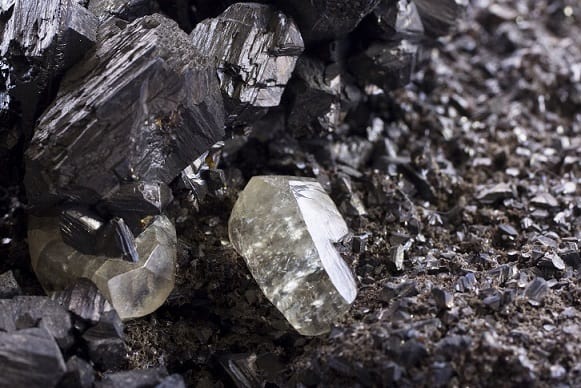
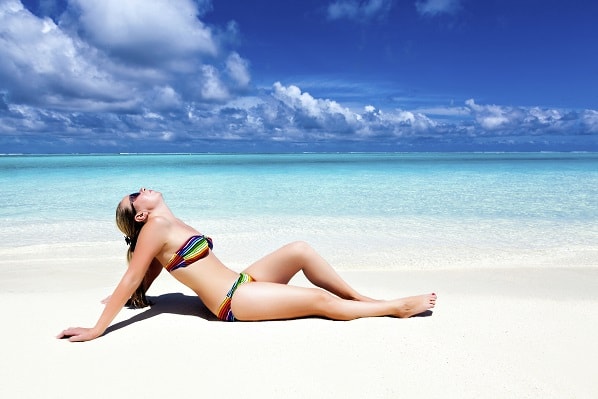
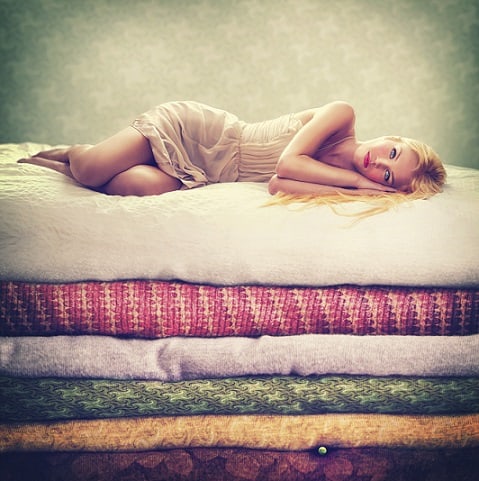


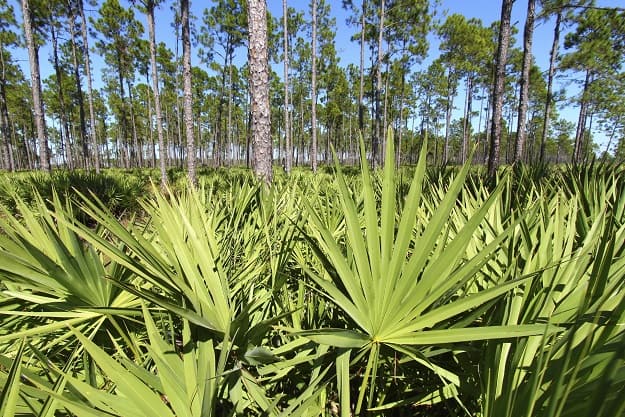
so men should not take saw palmetto?
Correct, it’ll mess with your hormones.
Why does my skin become oilier when I start sleeping better?
Hi! I had a question about an article i read on the mentioned website about combining natures answer alcohol free green tea leaf with slice of nature sea buckthorn berry oil. How exactly will that work? I believe you take the tea orally, and the sea buckthorn berry oil gets applied to the skin surface. If i combine them, or mix them up, do i drink the mixture or apply it topically? Drink the combined concoction or apply it to the surface of my skin? It’s not explained well in the article. Can you clear it for me please. Thank you.
No, green tea is a topical treatment too. So the answer is to combine them into an oil mixture. The article about green tea on this website covers it as a topical treatment, although when drunk, its powers are similar. The difference is that it lowers androgens internally, which men need to avoid: hence why I recommend local application on the skin.
Thank you for clearing that up for me. My other question is about the mixture ratio. What i have is a 2oz bottle of green tea, and a 120ml bottle of sea buckthorn berry oil. Should i mix the entire content of both bottles together one time, or mix a small batch at a time as needed. I’m just wondering if it will be ok to leave large amounts of the mixture until used up. Also, should i be worried about pillow cases getting permanently dyed or stained orange from the sea buckthorn berry oil? I read somewhere to be careful not to get the oil on your hands. I don’t know if that’s because it doesn’t wash off. I also read something about fair skinned people getting their faces stained or dyed, I’m not fair skinned, but i’m also not dark. Are these stains or dyes removable? Should i be worried? Will the green tea offset the orange color a little? Thanks again!
Hi Richard! I would still like to know about the mixture ratio. What i have is a 2oz bottle of green tea, and a 120ml bottle of sea buckthorn berry oil. the question is should i mix the entire content of both bottles together one time, or mix a small batch at a time as needed? I’m just wondering if it will be ok to leave large amounts of the mixture until used up. Also, shouuld i be worried about pillow cases getting permanently stained orange from the buckthorn berry oil? I read somewhere not to get the oil on your hands. Is that because it doesn’t wash off? Can it stain your skin permanently? When mixed, will the green tea offset the orange color? At what point do i add the tumerick that was mentioned, and how much of it will i need. I really need an answer. Thank you.
No, because you require only a few drops of green tea and that would use up your bottle. You don’t need to combine sea buckthorn oil with green tea necessarily, combining it with a cheaper carrier oil like grapeseed oil will preserve the oil skin benefits and dilute the orange colour too. Grapeseed oil has benefits for oily skin of its own, thanks to its richness in vitamin E.
Ok Richard. You advice me to substitute the green tea with grapeseed oil right? Well, what do i do with the tumerick? When and how do i incorporate the tumerick with the grapeseed oil and buckthorn berry oil?